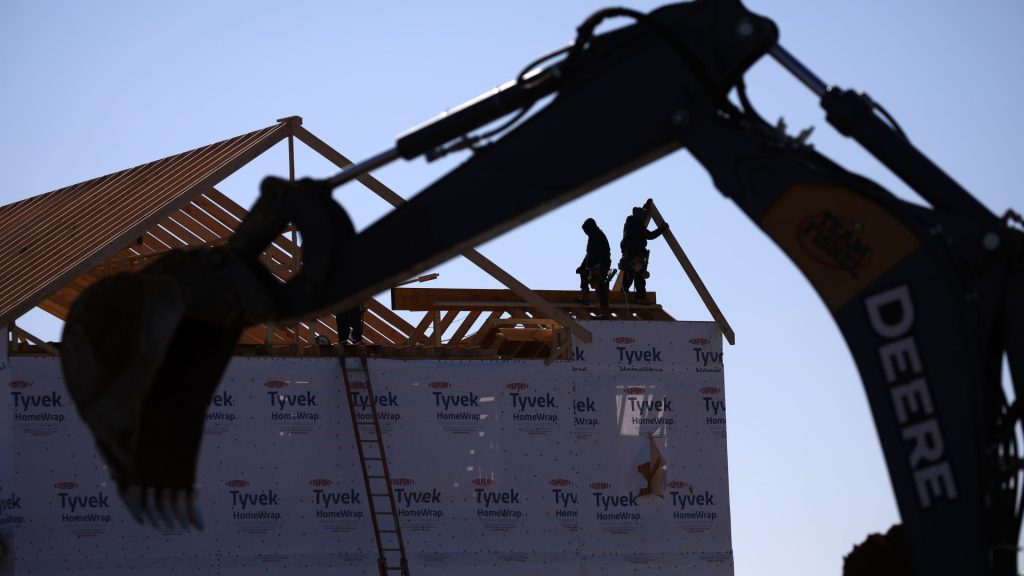American banks are closing out another quarter in which interest rates surged, reviving concerns about shrinking margins and rising loan losses — though some analysts see a silver lining to the industry’s woes.
Just as they did during the March regional banking crisis, higher rates are expected to lead to a jump in losses on banks’ bond portfolios and contribute to funding pressures as institutions are forced to pay higher rates for deposits.
KBW analysts Christopher McGratty and David Konrad estimate banks’ per-share earnings fell 18% in the third quarter as lending margins compressed and loan demand sank on higher borrowing costs.
“The fundamental outlook is hard near term; revenues are declining, margins are declining, growth is slowing,” McGratty said in a phone interview.
Earnings season kicks off Friday with reports from JPMorgan Chase, Citigroup and Wells Fargo.
Bank stocks have been intertwined closely with the path of borrowing costs this year. The S&P 500 Banks index sank 9.3% in September on concerns sparked by a surprising surge in longer-term interest rates, especially the 10-year yield, which jumped 74 basis points in the quarter.
Rising yields mean the bonds owned by banks fall in value, creating unrealized losses that pressure capital levels. The dynamic caught midsized institutions including Silicon Valley Bank and First Republic off guard earlier this year, which — combined with deposit runs — led to government seizure of those banks.
Big banks have largely dodged concerns tied to underwater bonds, with the notable exception of Bank of America. The bank piled into low-yielding securities during the pandemic and had more than $100 billion in paper losses on bonds at midyear. The issue constrains the bank’s interest revenue and has made the lender the worst stock performer this year among the top six U.S. institutions.
Expectations on the impact of higher rates on banks’ balance sheets varied. Morgan Stanley analysts led by Betsy Graseck said in an October 2 note that the “estimated impact from the bond rout in 3Q is more than double” losses in the second quarter.
Hardest-hit banks
Bond losses will have the deepest impact on regional lenders including Comerica, Fifth Third Bank and KeyBank, the Morgan Stanley analysts said.
Still, others including KBW and UBS analysts said that other factors could soften the capital hit from higher rates for most of the industry.
“A lot will depend on the duration of their books,” Konrad said in an interview, referring to whether banks owned shorter or longer-term bonds. “I think the bond marks will look similar to last quarter, which is still a capital headwind, but that there’ll be a smaller group of banks that are hit more because of what they own.”
There’s also concern that higher interest rates will result in ballooning losses in commercial real estate and industrial loans.
“We expect loan loss provisions to increase materially compared to the third quarter of 2022 as we expect banks to build up loan loss reserves,” RBC analyst Gerard Cassidy wrote in a Oct. 2 note.
Silver linings
Still, bank stocks are primed for a short squeeze during earnings season because hedge funds placed bets on a return of the chaos from March, when regional banks saw an exodus of deposits, UBS analyst Erika Najarian wrote in an Oct. 9 note.
“The combination of short interest above March 2023 levels and a short thesis from macro investors that higher rates will drive another liquidity crisis makes us think the sector is set up for a potentially volatile short squeeze,” Najarian wrote.
Banks will probably show stability in deposit levels in the quarter, according to Goldman Sachs analysts led by Richard Ramsden. That, and guidance on net interest income in the fourth quarter and beyond, could support some banks, said the analysts, who are bullish on JPMorgan and Wells Fargo.
Perhaps because bank stocks have been so beaten down and expectations are low, the industry is due for a relief rally, said McGratty.
“People are looking ahead to, where is the trough in revenue?” McGratty said. “If you think about the last nine months, the first quarter was really hard. The second quarter was challenging, but not as bad, and the third will be still tough, but again, not getting worse.”
Read the full article here







